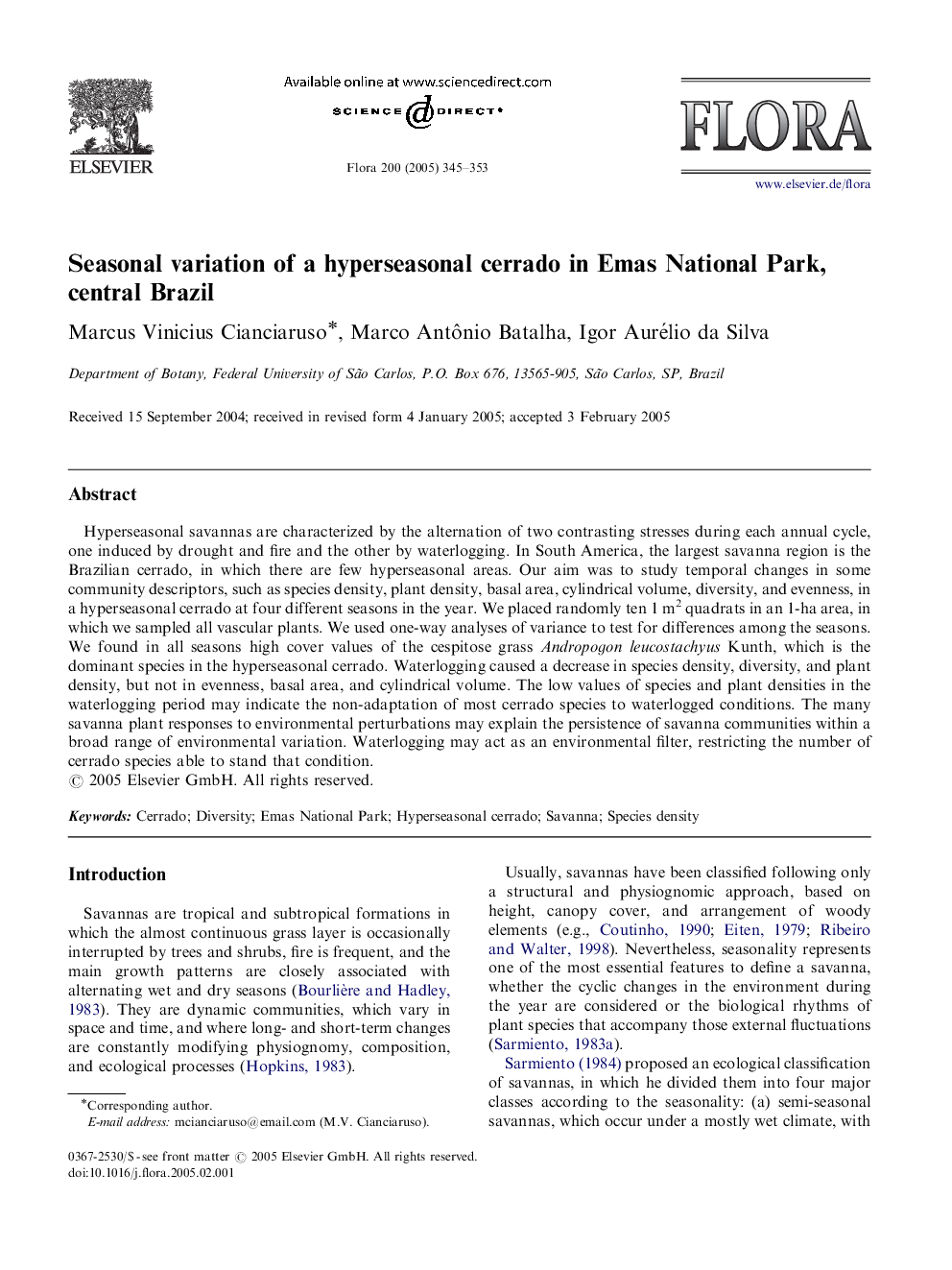| Article ID | Journal | Published Year | Pages | File Type |
|---|---|---|---|---|
| 10939274 | Flora - Morphology, Distribution, Functional Ecology of Plants | 2005 | 9 Pages |
Abstract
Hyperseasonal savannas are characterized by the alternation of two contrasting stresses during each annual cycle, one induced by drought and fire and the other by waterlogging. In South America, the largest savanna region is the Brazilian cerrado, in which there are few hyperseasonal areas. Our aim was to study temporal changes in some community descriptors, such as species density, plant density, basal area, cylindrical volume, diversity, and evenness, in a hyperseasonal cerrado at four different seasons in the year. We placed randomly ten 1 m2 quadrats in an 1-ha area, in which we sampled all vascular plants. We used one-way analyses of variance to test for differences among the seasons. We found in all seasons high cover values of the cespitose grass Andropogon leucostachyus Kunth, which is the dominant species in the hyperseasonal cerrado. Waterlogging caused a decrease in species density, diversity, and plant density, but not in evenness, basal area, and cylindrical volume. The low values of species and plant densities in the waterlogging period may indicate the non-adaptation of most cerrado species to waterlogged conditions. The many savanna plant responses to environmental perturbations may explain the persistence of savanna communities within a broad range of environmental variation. Waterlogging may act as an environmental filter, restricting the number of cerrado species able to stand that condition.
Related Topics
Life Sciences
Agricultural and Biological Sciences
Ecology, Evolution, Behavior and Systematics
Authors
Marcus Vinicius Cianciaruso, Marco Antônio Batalha, Igor Aurélio da Silva,
